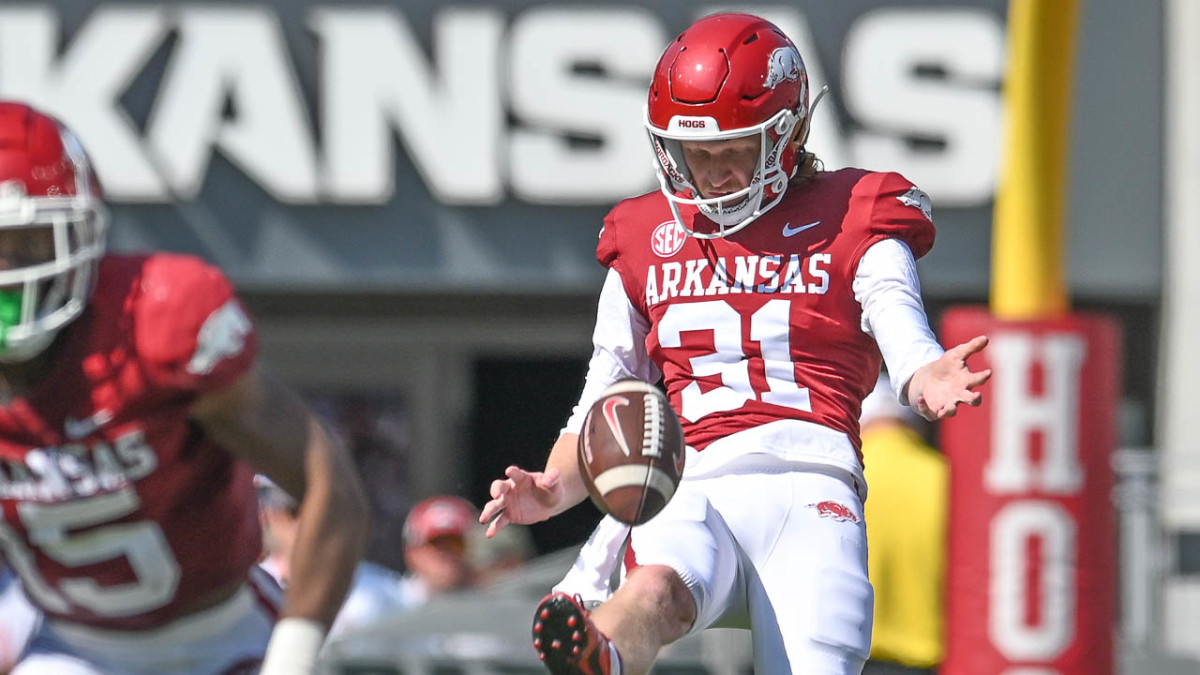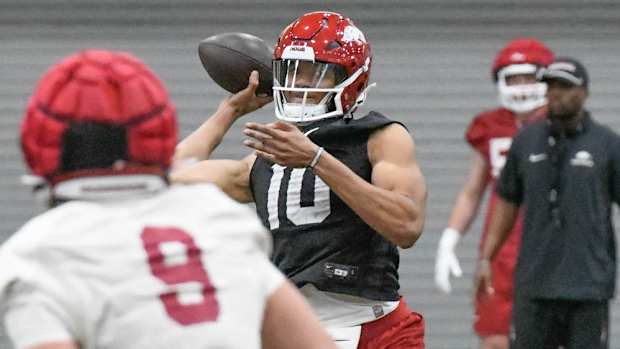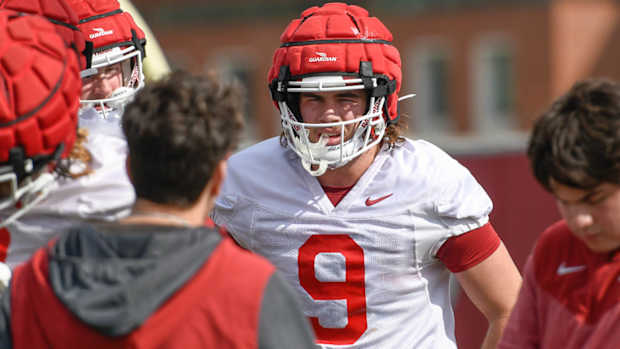
Arkansas' Analytics Only Work if Data is Current, Relative
FAYETTEVILLE, Ark. – The world of data can be a tricky place, especially for those who haven't spent years knowing how to look at it in the correct light. The difference between an athletics department hiring a guy who truly is a data analyst versus picking a staff member to look at data can be the difference in multiple games.
To paint a picture of the impact, we'll use a simplified situation. Let's say someone is breaking down political data and notices the information being received shows living within three miles of a pizza joint makes it 80% more likely you vote for democrats. Someone who doesn't understand data would determine pizza places are causing people to vote that way. The same would go in the opposite way for bait shops as the odds are high someone will vote republican if they live within three miles of a bait shop.
However, a data analyst will recognize it's the dense number of people who actually cause the pizza shops to be there because that's best for business. It just so happens that people living in dense population areas have problems and a culture that makes them more likely to vote democrat. Someone from Trump country isn't going to chow down on a good slice of pepperoni and turn democrat any more than a democrat is going to walk into a bait shop and buy a box of red wigglers and suddenly start voting republican.
Yes, that's a pretty obvious example, but when the data starts being about the ins and outs of a football game with endless variables affecting every motion that takes place within a single play, it becomes more difficult to determine accurately what's causing what. Trends develop that don't necessarily correlate to what appears to be the cause. It's takes someone who truly understands numbers who is willing to dive deeper than a basic spread sheet to do this right.
And that is if they're working with good data, which, when it comes to going for it on fourth down, true data analysts know isn't there just yet this season. Almost all the analytics put together over the past several years are absolutely useless now.
The reason? The new clock rule. All the previous data on what to do when is calculated on the clock stopping on a regular basis for any number of reasons. However, that doesn't happen anymore except for the final two minutes. As a result, a good data analyst would have already thrown nearly everything out and started fresh, leaving anyone who is using data from the past few years to suffer in the high likelihood of failure.
Before, a 10-point lead with eight minutes to go in the game was easy to overcome. It was an eternity. Now it's almost a death sentence because it's hard to get the ball enough times to potentially score enough points to come from behind. Based on the numbers, a six-play drive in the Arkansas-BYU game took a full minute less last season when compared to last Saturday. That's a major variable that has to be factored in.
The decision by Arkansas to go for it near mid-field on fourth down against BYU would have been a solid call last season. It was midway through the third quarter, the Hogs were up 31-21, and very little additional time was going to come off the clock if Arkansas punted instead of went for it and failed. The difference in potential outcome if BYU had started from its 20 or mid-field isn't as different as people might think, and the benefit of keeping a drive alive that close to field goal range is generally worth the trade-off.
However, it's a different scenario now. Had the Cougars driven from inside their own 20 to field goal range, it might have taken just over two minutes off the clock last year. On Saturday, it took BYU over 2:30 to go 24 yards for the field goal to make it 31-24. Punting, even if it results in the same field goal, is a much more inviting option than a year ago because it's eating up possessions more efficiently.
Let's say the punt results in the Cougars taking over at the 18. Their offense averaged 6.5 seconds of clock per yard on the drive that actually happened, so let's apply it to this theoretical drive. With an additional 32 yards to cover, BYU needs 208 seconds to get into field goal range. That's nearly 3:30. Instead of that field goal taking place with 4:43 left in the third quarter, it happens at the 1:15 mark.
The Razorbacks' next possession took 2:34, meaning BYU wouldn't have seen the ball again until there was 14:41 left in the game. Instead, the Cougars were able to tie the game up, 31-31, with 1:52 left in the third quarter.
And that's worst case scenario because the defense was playing well at that point and likely could have pulled a stop before that initial field goal would have taken place. It's a much different ball game at that point, but Pittman can't be faulted for making the call.
The old data says he made the better decision. At that point in the season, even if he did realize the clock rule created a variable that might have yielded a different suggestion, there wasn't enough hard data to work with yet to do anything other than go with previous trends in a snap decision scenario.
However, as more games are played, if there is anyone behind the scenes who has a strong grasp on numbers and how they truly work, expect to see the Hogs' approach change. Sometimes it will align with pervious years and sometimes it won't.
The important thing is those decisions are coming from a new set of data. If not, it could be a long year in Fayetteville because very little good comes from making important decisions on bad numbers. Saturday night in Baton Rouge against LSU should provide a clue where the Hogs are in this area.
HOGS FEED:
TRUE FRESHMAN SLOWLY BECOMING ONE OF FEW BRIGHT SPOTS IN DAN ENOS'S OFFENSE
MUSS BUS CONTINUES TO BRING POTENTIAL TOP RECRUITS TO FAYETTEVILLE
HOGS LEAVE NO STONE UNTURNED TO PREPARE FOR LSU'S DEATH VALLEY
• Return to allHogs home page
• Subscribe and follow us on YouTube
• Follow allHOGS on Twitter and Facebook






